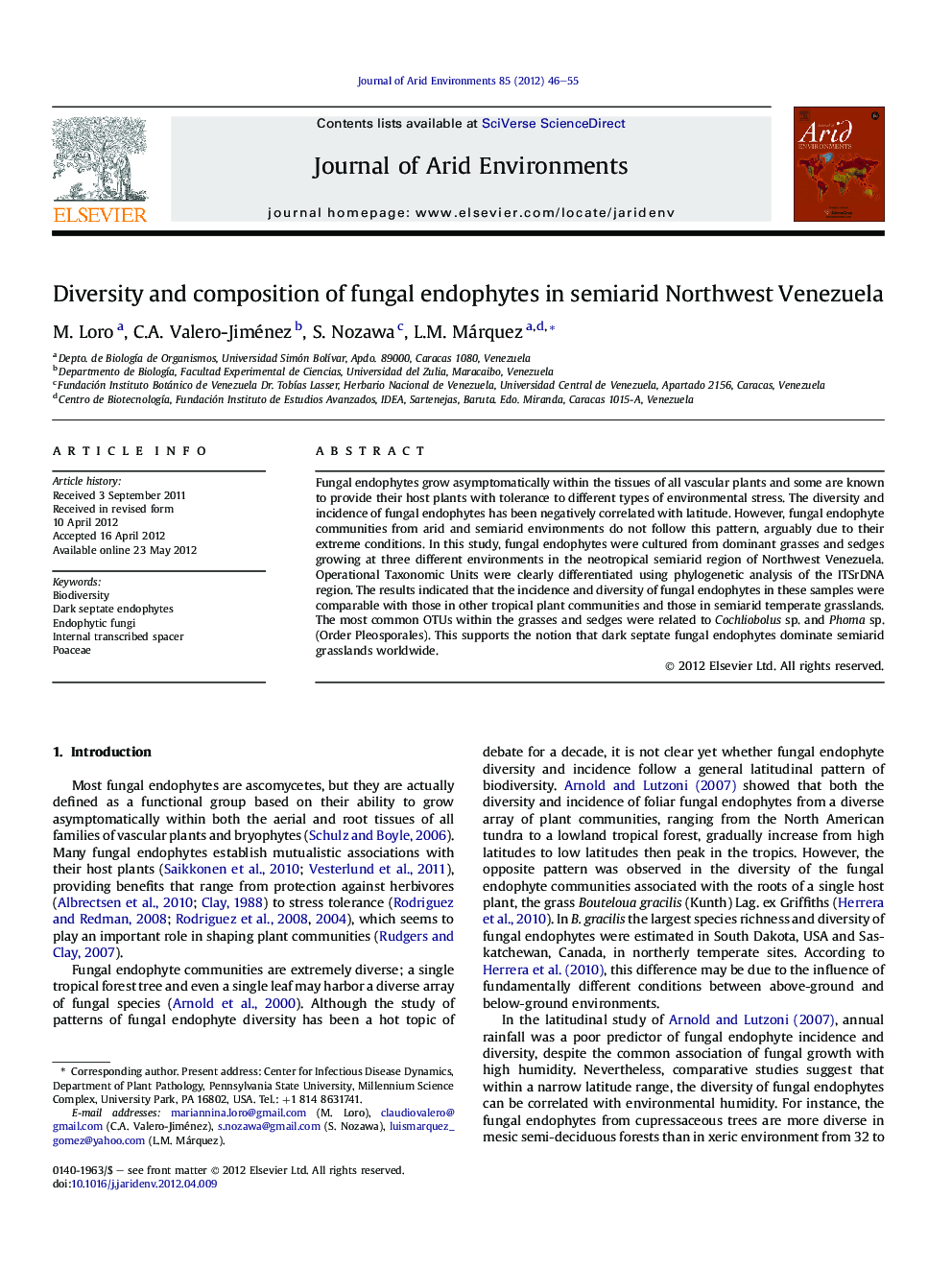| Article ID | Journal | Published Year | Pages | File Type |
|---|---|---|---|---|
| 4393310 | Journal of Arid Environments | 2012 | 10 Pages |
Fungal endophytes grow asymptomatically within the tissues of all vascular plants and some are known to provide their host plants with tolerance to different types of environmental stress. The diversity and incidence of fungal endophytes has been negatively correlated with latitude. However, fungal endophyte communities from arid and semiarid environments do not follow this pattern, arguably due to their extreme conditions. In this study, fungal endophytes were cultured from dominant grasses and sedges growing at three different environments in the neotropical semiarid region of Northwest Venezuela. Operational Taxonomic Units were clearly differentiated using phylogenetic analysis of the ITSrDNA region. The results indicated that the incidence and diversity of fungal endophytes in these samples were comparable with those in other tropical plant communities and those in semiarid temperate grasslands. The most common OTUs within the grasses and sedges were related to Cochliobolus sp. and Phoma sp. (Order Pleosporales). This supports the notion that dark septate fungal endophytes dominate semiarid grasslands worldwide.
► Our inventory of fungal endophytes is the first for semiarid neotropics. ► We found an unexpectedly high incidence of colonization (100%). ► The diversity of fungal endophytes was higher than in tropical dry forests. ► The communities were dominated by dark septate endophytes (order Pleosporales). ► The endophyte composition is similar in plants growing on the same environment.
